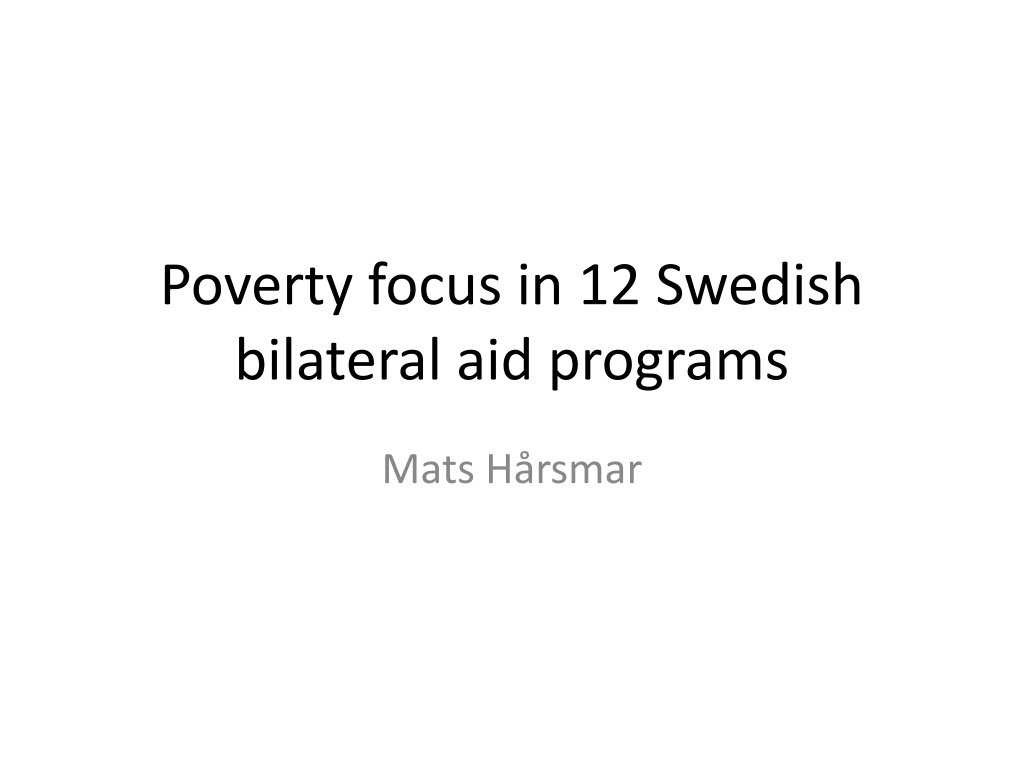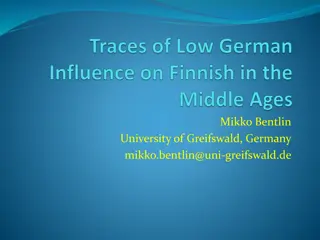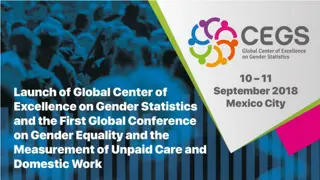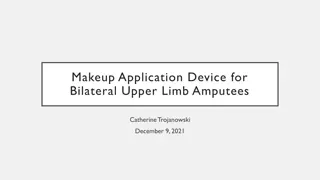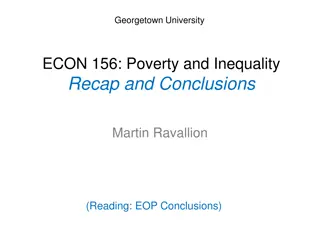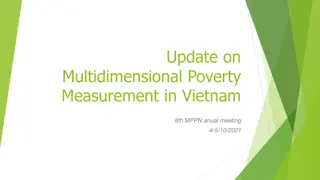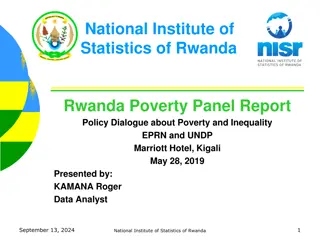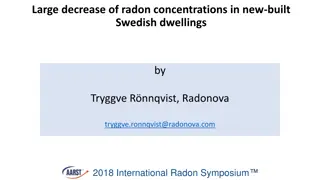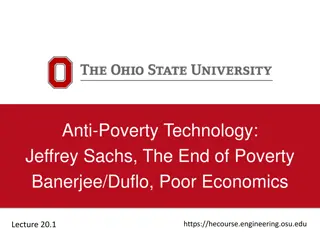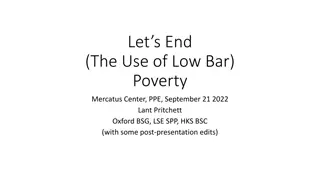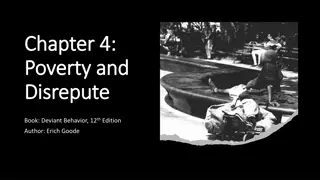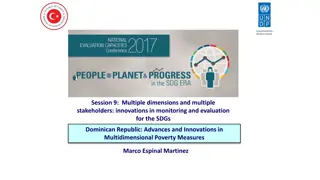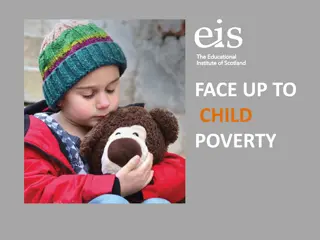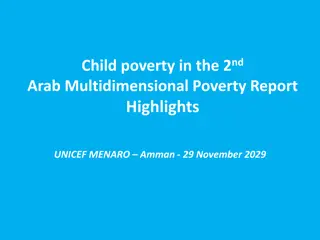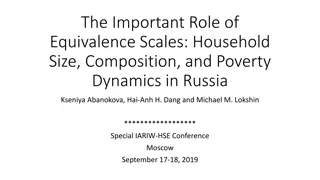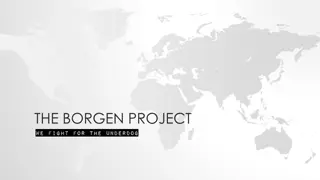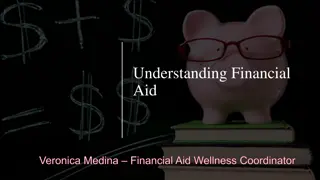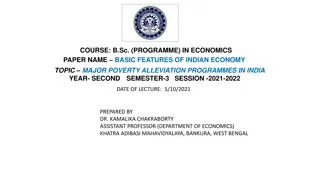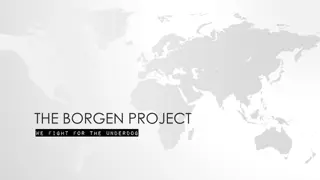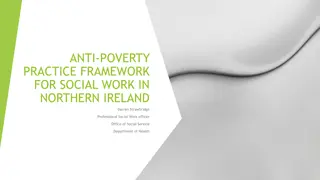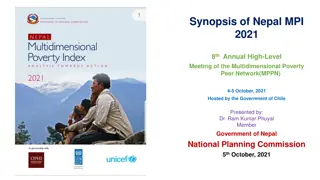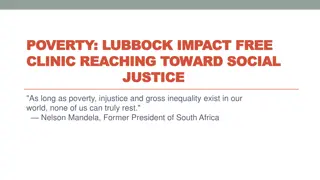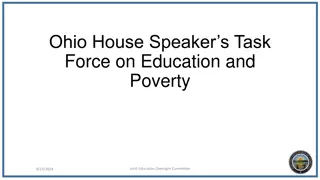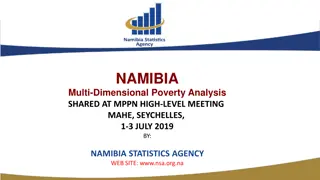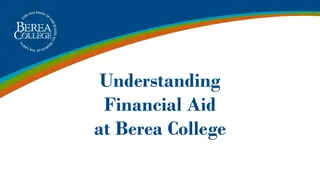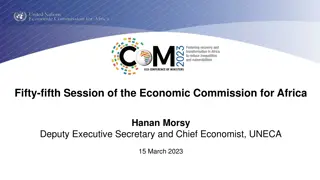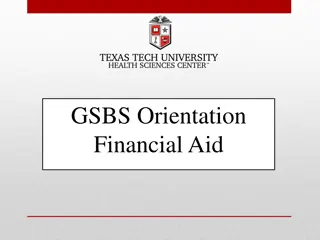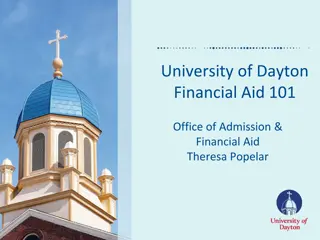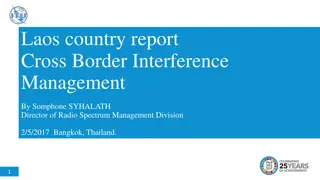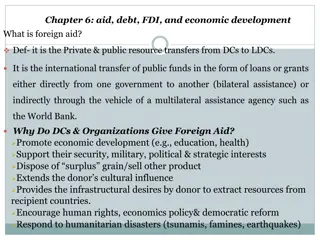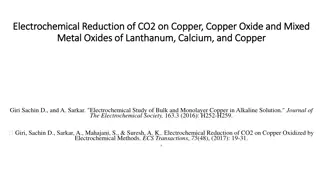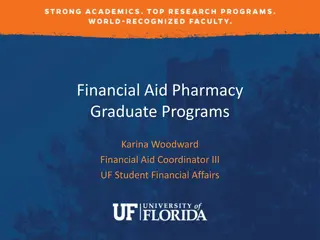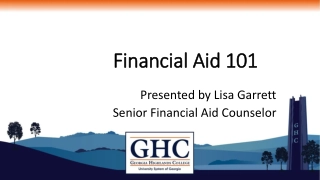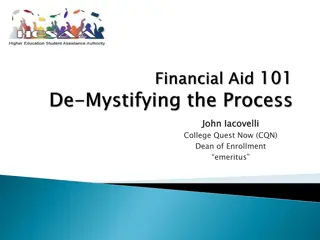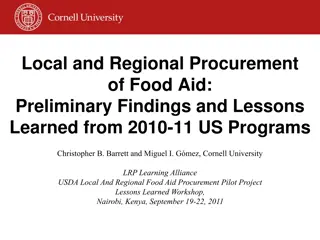Swedish Bilateral Aid Programs: Focus on Poverty Reduction in 12 Partner Countries
In Swedish bilateral aid programs, the focus is on poverty reduction in 12 partner countries such as Zambia, Tanzania, Rwanda, and more. The aid aims to tackle chronic poverty, sustain poverty escapes, and stop impoverishment through various interventions like education, social assistance, economic growth, and health care.
Download Presentation

Please find below an Image/Link to download the presentation.
The content on the website is provided AS IS for your information and personal use only. It may not be sold, licensed, or shared on other websites without obtaining consent from the author. Download presentation by click this link. If you encounter any issues during the download, it is possible that the publisher has removed the file from their server.
E N D
Presentation Transcript
Poverty focus in 12 Swedish bilateral aid programs Mats H rsmar
Why these countries? Poverty focus within countries; Four categories of Swedish partner countries; Poverty focus most likely in long term collaboration
Poverty indicators, partner countries % Headcount poverty USD 1.25/day (PPP) % Poverty gap, 1,25 USD/day (PPP) Poverty trend over last decade % Swedish ODA to poverty reduction Zambia Tanzania Rwanda Mocambique Mali Burkina Faso Kenya Bangladesh Uganda Ethiopia Cambodia Bolivia 74 68 63 60 50 45 43 43 38 31 19 16 42 28 27 25 16 15 17 11 12 8,2 3,5 8,6 On the rise Mild decrease Mild decrease Sharp decrease Mild decrease Continuous (?) On the rise (?) Steady decrease Steady decrease Sharp decrease Sharp decrease Mild decrease 70 50 20 - 25 60 20 - 30 25 - 30 20 - 25 80 35 40 - 45 20 35
Share SE poverty reducing aid vs. poverty incidence Share SE aid to poverty reduction (%) 90 80 Bangladesh 70 Zambia 60 Mocambique 50 Tanzania Bolivia Ethiopia 40 Burkina Faso Uganda 30 Mali Rwanda Kenya 20 Cambodia 10 National poverty incidence (%) 0 0 10 20 30 40 50 60 70 80
What works in poverty reduction? Poverty status 3.Sustain poverty escapes Poverty line 2. Stop impoverishment 1.Tackle chronic poverty Time
Poverty interventions, SE partners Tackling extreme poverty Stopping impoverishment Sustaining poverty escapes Better quality basic educ Social assist. Pro- poorest econ. growth Affirm. action, anti- discrim. Universa l health care saving s & insur. disaster risk mgmt Prevent conflict Assets, land policies, mobility Skills training labor market links social protect Univers al SRHR 2012-2013 Zambia Tanzan. Rwanda Mocam. Mali** Burkina F Kenya Bangla. Uganda Ethiopia Cambod Bolivia
Poverty interventions, SE partners Tackling extreme poverty Stopping impoverishment Sustaining poverty escapes Better quality basic educ Social assist. Pro- poorest econ. growth Affirm. action, anti- discrim. Universa l health care saving s & insur. disaster risk mgmt Prevent conflict Assets, land policies, mobility Skills training labor market links social protect Univers al SRHR 2012-2013 Zambia + + + +* + +* + Tanzan. +* +* + + Rwanda + + Mocam. +* +* + + + Mali** + + + Burkina F Kenya + + + + + + + + + + Bangla. + + Uganda + + Ethiopia + + + + + + + + Cambod Bolivia + +
Poverty interventions, SE partners Tackling extreme poverty Stopping impoverishment Sustaining poverty escapes Better quality basic educ Social assist. Pro- poorest econ. growth Affirm. action, anti- discrim. Universa l health care saving s & insur. disaster risk mgmt Prevent conflict Assets, land policies, mobility Skills training labor market links social protect Univers al SRHR 2012-2013 Zambia + + + +* + +* ++ +* + + ++ Tanzan. ++ +* ++* + Rwanda + ++ ++ + Mocam. +* ++ ++ (++*) +* + ++* + + + Mali** + + + Burkina F Kenya + ++ + + + + ++ + + + + ++ Bangla. + + ++ Uganda ++ + + + Ethiopia + + + + ++ + + + Cambod Bolivia ++ + ++ ++ +
Poverty interventions, SE partners Tackling extreme poverty Stopping impoverishment Sustaining poverty escapes Better quality basic educ Social assist. Pro- poorest econ. growth Affirm. action, anti- discrim. Universa l health care saving s & insur. disaster risk mgmt Prevent conflict Assets, land policies, mobility Skills training labor market links social protect Univers al SRHR 2012-2013 Zambia +++ +* + + +++ ++* + +* + +* ++ +* + +++* + +++ ++ + ++ Tanzan. ++ + Rwanda + ++ +++ ++ + +++* Mocam. +* ++ ++ (++*) +++ +* + ++* + +++ +++ + + Mali** + + Burkina F Kenya + +++ ++ + + + + + + + + ++ +++ + + + Bangla. + + ++ Uganda ++ + + + Ethiopia + +++ +++ +++ + + + ++ Cambod Bolivia ++ + ++ ++ +
Tackling extreme poverty Better quality basic education Social assistance Pro-poorest econ. growth Affirmative action, anti- discriminat. + + 2012-13 Zambia Tanzania Rwanda Mocambique Mali Burkina Faso Kenya Bangladesh Uganda Ethiopia Cambodia Bolivia +++ +* ++ + ++ +++ +* ++ ++ (++*) +++ + + +++ ++ + + ++ + + +++ +++ +++ + ++ +
Stopping impoverishment 2012-13 Universal health care +++ ++* Savings & insurance + +* + +* Disaster risk mgmt Prevent conflict Zambia Tanzania Rwanda Mocamb Mali Burkina F ++ +* + ++* + + + Kenya Bangladesh Uganda Ethiopia Cambodia Bolivia + +++ +++ + + + + ++ + + ++
Sustain poverty escapes 2012-13 Assets, land policies, mobility Skills training, labor mkt links social protection Universal SRHR Zambia Tanzania Rwanda Mocambique Mali Burkina F Kenya Banglades Uganda Ethiopia Cambodia Bolivia ++ +* + +++* + +++ ++ + ++ + + +++* + + + + ++ +++ + + + + + ++ ++ +
Summary Poverty severity doesn t guide allocations; Broad education & social protection very thinly supported; Interventions thinly spread; SE somewhat stronger at tackling extreme poverty; Stronger at pro-poor growth and health; Tripod is unbalanced.
Conclusions Glass is half full Either more comprehensive programs Or more focus on specific areas coordinated with others Strengthen education and skills training, social protection
